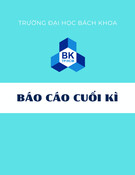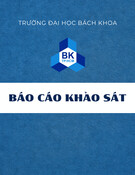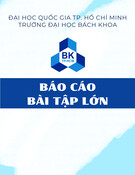
Original article
Effects of endomycorrhizal development
and light regimes on the growth
of Dicorynia guianensis Amshoff seedlings
Moïse Bereaua, Têté Sévérien Barigaha, Eliane Louisannaaand Jean Garbayeb,*
aStation de Recherches Forestières, INRA, BP 709, 97384 Kourou, Guyane Française
bCentre de Recherches Forestières de Nancy, INRA, 54280 Champenoux, France
(Received 6 July 1999; accepted 20 March 2000)
Abstract – The influence of mycorrhizal infection rate and light environment on growth traits was examined for 50-week-old
Dicorynia guianensis Amshoff tree seedlings. The seedlings were grown on two soil substrates (control and inoculated) in shade tun-
nels under three relative light levels (50%, 14% and 1% of full sunshine). For seedlings growing under 1% of full sunlight no signifi-
cant differences between control and inoculated plants were observed in plant traits though a high rate of endomycorrhizal infection
was recorded. In partial shaded sunlight, 14% and 50%, the rate of mycorrhizal infection was positively related to the growth perfor-
mances of seedlings. The optimal growth was obtained under 14% of full sunlight, showing a greater efficiency of the mycorrhizas.
tropical rainforest / Dicorynia guianensis / seedlings / endomycorrhizas / light / experimental approach
Résumé –Effet des mycorhizes et de la lumière sur la croissance des semis de Dicorynia guianensis Amshoff, une césalpinia-
cée de la forêt tropicale humide de Guyane française. Des semis de D. guianensis ont été cultivés en pots sur un sol désinfecté,
inoculé ou non avec du sol forestier, dans des serres tunnels sous trois régimes lumineux (1 %, 14 %, 50 % du plein découvert). Des
paramètres de croissance des plants et la colonisation endomycorhizienne des racines ont été mesurés au bout de 50 semaines. Les
semis soumis à 1% d’éclairement et croissant sur les deux types de sol ne présentaient aucune différence significative pour aucun des
caractères mesurés, bien qu’un taux élevé de mycorhization aie été noté chez les plants sur sol inoculé. En éclairement partiel, 14 et
50 %, les performances de croissance des semis étaient positivement reliées au taux d’infection mycorhizienne. L’optimum de crois-
sance était obtenu pour l’intensité lumineuse moyenne (14 %), montrant ainsi une meilleure efficacité des mycorhizes.
forêt tropicale humide / Dicorynia guianensis / semis / endomycorhizes / lumière / approche expérimentale
1. INTRODUCTION
Tropical forests often present a nutrient limitation
related to acid soils, poor in mineral elements and organ-
ic matter. Thus, one of the major adaptations of plants to
low availability of nutrients resources has been the help
of the greater mobilizing capacity of their symbiotic
mycorrhizal fungi. Benefits from mycorrhizas are recog-
nised as improving the uptake of most low-mobility
nutrients as phosphorus, copper, zinc or ammonium [27],
but the fungus derives a substantial part of the plant pho-
tosynthates. Between 4% and 20% of net photosynthates
Ann. For. Sci. 57 (2000) 725–733 725
© INRA, EDP Sciences
* Correspondence and reprints
Tel. (33) 03 83 39 40 79; Fax. (33) 03 83 39 40 69; e-mail: garbaye@nancy.inra.fr

M. Bereau et al.
726
are transferred to the fungus for its growth and mainte-
nance, particularly under low light conditions [20, 42].
Mycorrhizal associations are the rule in most plant
species and genera [34], and arbuscular endomycorrhizas
are the most common symbiotic associations among
woody plants in French Guiana [8, 9].
Tree growth and reproduction are closely related to
aboveground environmental factors, particularly to small
changes in light availability, associated with openings in
the forest canopy [13]. Lower mortality rates under some
degree of canopy opening than under intact forest
canopy have also been underlined [3, 13, 15]. This pat-
tern is most easily explained by more favourable carbon
balances in light environments [19]. However, differ-
ences in light requirements among seedlings of different
tropical tree species have already been demonstrated [4,
17] but little is still known about the autecological char-
acteristics of these species [6, 18, 33]. It has been sug-
gested that low light intensity limits root growth and
reduces the root:shoot ratio because of a low supply of
carbohydrates to the roots [29].
The effect of photon irradiance on the development on
endomycorrhizal fungi has been studied as early as 1940
by Peyronel [37] who found in cereals a positive rela-
tionship between the two parameters. Since that time,
many investigators have reported conflicting results [25,
36, 44]. Interactions between mycorrhizal efficacy and
light are complex because light affects plant growth not
only directly through photosynthesis, but also indirectly
through its effects on other factors [12, 21].
Because many tropical tree species require shelter
from direct sunlight to establish, this study is focused on
the dependency of the growth of seedlings of Dicorynia
guianensis (an important tree in French Guiana) to both
endomycorrhizal infection rate and light intensity avail-
able during the establishment phase. The hypothesis
which is tested experimentally is that the dependency or
responsiveness of D. guianensis seedlings to arbuscular
mycorrhizas depends on light intensity, i.e. to their envi-
ronmental status on the forest floor. This is part of a
cooperative programme on the determinism of the natur-
al regeneration of the tropical rainforest.
2. MATERIALS AND METHODS
2.1. Site location, seed harvesting and plant material
This study was conducted in Kourou (52°45 W,
5.2° N) located on the coast of French Guiana.
Dicorynia guianensis Amshoff, an Amazon endemic
forest tree species belonging to the Caesalpiniaceae, was
chosen in this study because of its importance in the
wood market (first commercial species) in French
Guiana [16, 39] and also because of the capacity of its
seedlings to develop in a large range of light intensity [7,
35, 38].
Seeds were extracted from pods collected on the forest
floor at the experimental site of Paracou [5] at the end of
the wet season (May-June 1996). The seeds were soaked
in pure sulphuric acid for 10 min and rinsed 5 times with
sterile distilled water in order to break down dormancy.
They were then surface-sterilized with a 0.1% mercury
chloride solution (HgCl2) for 5 min and rinsed four times
with sterile water. The seeds were then kept in aseptic
conditions during the germination phase. The root
emerged within one week, and the germinations were
transplanted in black plastic pots under shade tunnels.
2.2. Soil substrate
A ferrallitic forest soil (top fifteen cm) was collected
at the experimental site of Paracou and sieved through a
0.5 cm mesh (0.5 cm diameter) to remove coarse parti-
cles. It was mixed with 1/3 (v/v) white sand and steam-
disinfected at 90 °C three times for two hours each with
one-day intervals. The disinfected soil was kept and used
two weeks later. Mycorrhizal inoculum was provided by
fresh forest soil. The pots were filled according to the
following protocol:
(i) Control (disinfected soil substrate with addition of
10 ml per pot of a microbial filtrate soil solution
obtained from the thoroughly mixed forest soil and
water, 1:1 v/v, filtered on Whatman paper, 4–7 µm,
retaining mycorrhizal fungal spores but not bacteria).
(ii) Inoculated soil (disinfected soil substrate mixed with
30% v/v of the same non-disinfected soil mix).
Each pot was filled with 1.3 l of the required soil sub-
strate and received one germinated seed. Prior to plant-
ing, pots were saturated using tap water. Thereafter,
50 ml of water was brought to each pot daily, using an
automatic drip-irrigation system [9].
2.3. Light regimes and temperature variations
in the shade tunnels
Three light regimes were imposed ranging from 1% of
full sunlight (Low Light Intensity: LLI) to 14% (Medium
Light Intensity: MLI) and 50% (High Light Intensity:
HLI), simulating variation in light intensity from an
intact canopy to a large gap. The light regimes were
obtained by using waterproof transparent PVC sheets
(intercepting all precipitations) overlapped by neutral

Mycorrhizae and light on Dicorynia seedlings 727
nylon black nets. For each sheltered tunnel, light mea-
surements were made simultaneously outside and inside
the tunnel using two quantum sensors (LiCor
Instruments, Lincoln, Nebraska) during bright sunny
days. The light regime was calculated as the mean ratio
of the instantaneous photosynthetic photon flux densities
(PPFD) measured over the daytime in the sheltered tun-
nel and outdoor in full sunlight.
The use of shelters leads to an alteration of the local
climate. Among the climate parameters, only the temper-
ature, read with a minima-maxima thermometer,
received further attention, especially during the excep-
tional and heavy dry season encountered on September
1997 in French Guiana. The water deficit was very high
and midday air temperature reached 50 °C during a few
days under the less shaded tunnel (HLI) and the values
of the soil temperature in the pots ranged from 42 to
47 °C. The soil temperature recorded under the two other
tunnels (i.e. 1% and 14% of full sunlight) was in the
range of 32 to 36 °C. This parameters were extreme
compared to the normal air temperature (33 °C) and
humidity (55%) for the season.
2.4. Experimental set-up
The potted plants were randomly distributed in a full-
block design with six treatments (two soil substrates ×
three light regimes), four blocks and 10 plants within
each block-treatment combination in order to minimize
the spatial heterogeneity effects in light availability
under the tunnel shelters. The pots were assigned to
shade tunnels. The seedlings were grown for 50 weeks
and harvested for measuring growth parameters and
endomycorrhizal colonization.
2.5. Sampling and measurement
Dicorynia guianensis Amshoff has pinnate composite
leaves. From November 1996 to October 1997, the
leaflets of the seedlings were counted every 8–12 days
and the height of their stem measured from the soil level
to the apical meristem, in order to describe the kinetic of
leaf production and shoot growth.
At the end of the experiment (350 days), the seedlings
were harvested and the following operations were per-
formed:
– the total leaf blade area of each seedling was mea-
sured using a LI-3000 area meter (LI-COR Inc,
Lincoln, NE, USA). Leaves and stems were separately
oven-dried at 80 °C for 72 hours and weighed. As
endomycorrhizas had been shown to enhance root
acquisition of phosphate (P) from poor tropical soils
[26], the phosphorus concentration of sampled leaves
(3 replicates from mixed leaves) of the seedlings
involved in each treatment were determined. The
analyses were performed in the INRA Laboratoire
central d’analyses des plantes in Bordeaux (France).
– the root systems were separated from soil and water-
washed. The abundance of mycorrhizal external
mycelium surrounding the fine roots was assessed
using a stereomicroscope. A random sub-sample of
fine roots was cut into 1 cm pieces, cleared and
stained for quantifying endomycorrhizal colonization
[8, 9]. The remaining root systems were oven-dried at
80 °C for 72 h and weighted.
These data were then used to assess the number of
leaflets of plants, height, leaf area and weight, total
above and below-ground biomass, leaf area ratio,
root:shoot ratio and endomycorrhizal infection.
2.6. Data analysis
Using Statview 4.5 from Abacus Concepts Inc., a
fully factorial ANOVA analysis of the data at harvest
was performed in order to detect any interactions
between the 3 factors (light, mycorrhizal inoculation and
blocks). Significant differences (P< 0.05) between indi-
vidual treatments were detected using Fisher’s pooled
least significant difference.
The endomycorrhizal infection was expressed as a
percent of colonised root length [9], and the results were
transformed by arcsinus square root before being sub-
jected to the analysis of variance.
3. RESULTS
The overall analysis of variance indicated that there
was no significant block effect (table I) and that the
treatment factor was statistically significant at the 0.05
probability level for all parameters. Regarding the total
biomass, table I and figure 1 showed interactions
between light and mycorrhizas.
3.1. Mortality rate
At the beginning of the experiment (day 30), the
seedling mortality was the same (less than 5%) in the
partially shaded treatments (MLI and HLI) in both soils,
while at 1% of full sunlight (LLI), the mortality was
17% for the control seedlings and 27% for the inoculated
ones.

M. Bereau et al.
728
At the end of the experiment (350 days), the propor-
tion of dead plants had increased only for the latter treat-
ments (20 and 32%, respectively).
3.2. Growth kinetics
At 200 days, leaflet number was higher for seedlings
grown under HLI than under MLI and LLI. Soil treat-
ment (control or inoculated) had no effect on leaflet
number and production when seedlings where grown
under LLI. Therefore, leaflet production rate is more
light-dependent than mycorrhiza-dependent. About 60
days later, a natural soil drought occurred in relation to
extreme climatic conditions, leading to leaf fall only on
seedlings growing under HLI. Leaflet production
resumed at least 42 days earlier for seedlings grown in
inoculated soil than for those grown in the control soil.
At MLI, no leaf fall was observed in the inoculated treat-
ment.
No difference in height growth rate under the three
light intensities was noted at 200 days for the control
(figure 2), while a faster growth was observed under
MLI for the inoculated soil treatment (+35%). This dif-
ference was still marked and increasing at the end of the
experiment.
3.3. Growth parameters and mycorrhizal
colonization at the end of the experiment (350 days)
3.3.1. Leaflet number, height and leaf area
per seedling (table II)
At the end of the experiment, the number of leaflets
per seedling was the same in all treatments, except in the
inoculated soil with medium or low light intensity where
it was significantly higher (almost twofold). The leaf
area was even more markedly affected, with values more
Table I. Full factorial Analysis of Variance for the total biomass per seedling at 50 weeks. Effects are considered as significant for
P< 0.05; DF: degree of freedom; Myco: mycorrhizal treatment (control and inoculated soil).
DF Sum of squares Mean square F - ratio P
Blocks 3 3.469 1.156 0.683 0.5634
Light 2 321.426 160.713 94.933 < 0.0001
Blocks ×Light 6 16.595 2.766 1.634 0.1401
Myco 1 126.455 126.455 74.697 < 0.0000
Blocks ×Myco 3 8.461 2.820 1.666 0.1759
Light ×Myco 2 60.022 30.011 17.727 < 0.0000
Blocks ×Light ×Myco 6 12.741 2.124 1.254 0.2808
Residues 182 308.109 1.693
Figure 1. Interaction graph between light and mycorrhizas for
the total biomass per seedling after 50 weeks. C: control treat-
ment; Is: inoculated soil treatment; HLI: high light intensity;
MLI: medium light intensity; LLI: low light intensity. Bars rep-
resent standard errors.
Table II. Number of leaflets, height and leaf area per seedling
afatter 50 weeks. C: control, non-inoculated soil; Is: inoculated
soil. HLI: high light intensity; MLI: medium light intensity;
LLI: low light intensity. Values in a column followed by the
same letter are not significantly different (Fisher pooled least
significant difference, P≤0.05).
Treatments Means and standard errors of the mean
Number Height Leaf area
of leaflets (cm) (cm2)
C - HLI 10.27 ± 0.74 bc 14.42 ± 0.33 a92.17 ± 5.41 a
Is - HLI 17.92 ± 1.54 a15.99 ± 0.46 b215.42 ± 21.17 b
C - MLI 9.78 ± 0.60 bc 15.51 ± 0.43 ab 142.17 ± 9.89 c
Is - MLI 18.78 ± 1.07 a20.34 ± 0.58 c408.47 ± 27.40 d
C - LLI 10.66 ± 0.22 bc 16.14 ± 0.59 b173.60 ± 12.34 bc
Is - LLI 10.44 ± 0.26 bc 16.61 ± 0.63 b175.00 ± 15.23 bc
cIs

Mycorrhizae and light on Dicorynia seedlings 729
than four times higher for the treatment with inoculated
soil and medium light intensity than for the treatment
with control soil and high light intensity.
Height was less affected, with treatments ranking as
for leaf area.
The colour of the leaves differed according to the
treatments: they were dark green in both LLI treatments,
pale green at MLI and pale green with brown and yellow
spots at HLI.
3.3.2. Total dry weight
Seedlings grown under medium light intensity on
inoculated soil produced the highest amount of total dry
matter. No significant difference of root dry weight
between HLI and MLI on the inoculated soil substrate
(figure 3) was noted, but the seedlings grown under the
same light intensities on inoculated soil produced twice
more root dry matter. There was no difference in root dry
matter production (which was extremely low) between
seedlings grown under low light intensity, whatever the
soil treatment .
Figure 2. Number of
leaflets and seedlings
height against light intensi-
ty and time. C: control
treatment; Is: inoculated
soil treatment; LLI, MLI,
HLI: respectively low,
medium and high light
intensity. Arrow: environ-
mental drought.
Figure 3. Total root dry weight per seedling after 50 weeks.
White: control treatment; black: inoculated soil treatment. LLI,
MLI, HLI: respectively low, medium and high light intensity.
a, b, c: values with the same letter are not significantly differ-
ent (Fisher pooled least significant difference, P≤0.05, one
factor ANOVA).
















